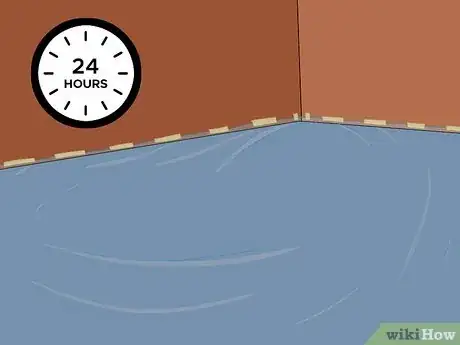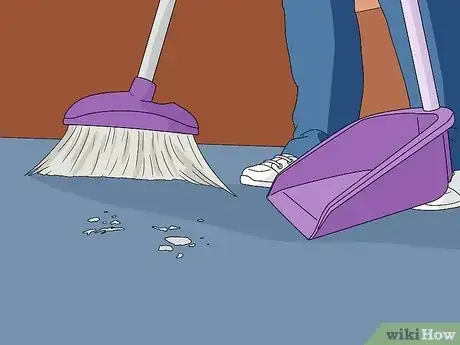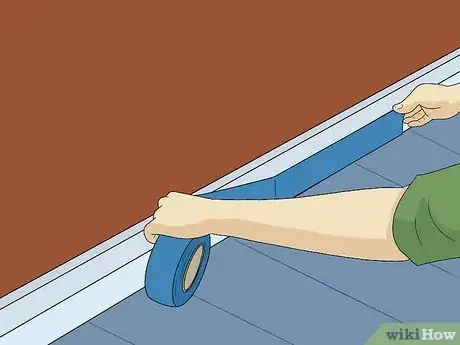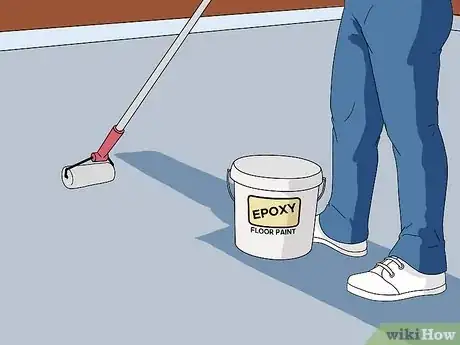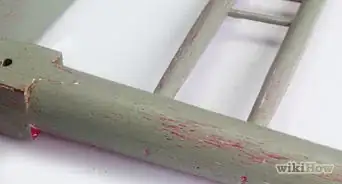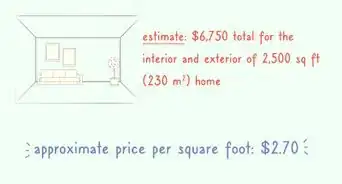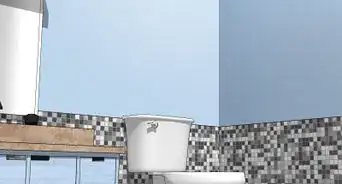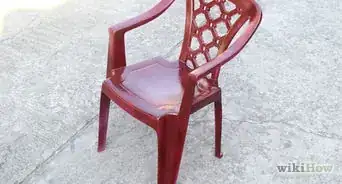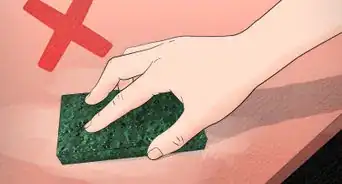wikiHow is a “wiki,” similar to Wikipedia, which means that many of our articles are co-written by multiple authors. To create this article, volunteer authors worked to edit and improve it over time.
wikiHow marks an article as reader-approved once it receives enough positive feedback. In this case, 100% of readers who voted found the article helpful, earning it our reader-approved status.
This article has been viewed 305,885 times.
Learn more...
A painted basement floor enhances the overall appearance of the room, can mask surface imperfections, and is easy to maintain. But certain steps must be taken to ensure that the painting process comes to a successful conclusion. The surface must be carefully cleaned before you begin painting. The heavy-duty paint you'll need for the job has certain characteristics that will require you to complete the job in less than a day, and other constraints must be considered before starting. Follow these guidelines to learn how to paint your basement floor.
Steps
-
1Make sure conditions are right before starting the project. Concrete can be difficult to paint. It must be treated so paint will stick to it, and painting should only be done within a specified temperature range and dry conditions.
- Test the humidity in your basement by taping a piece of plastic onto the floor and letting it sit for 24 hours. If condensation appears on the plastic, moisture is seeping through the floor.
- Moisture appearing on the outside of the plastic means the room is too humid. Use a dehumidifier to make conditions right for painting.
- Water on the underside of the plastic means the moisture is making its way through the concrete. Clean out your gutters and downspouts to help alleviate this problem.
- Don't paint your basement floor if room temperature exceeds 90 degrees F (32.2 degrees C) or is 40 degrees F (4.44 degrees C) or colder.
-
2Clean your basement floor thoroughly. A concrete floor must be properly readied to ensure that the paint will adhere to it.[1]
- Move all furniture out of the area that will be painted. The heavy-duty paint you'll use to paint your basement floor contains a chemical component that requires timely application. You'll have to paint the entire room at once, so furniture must be stored elsewhere.
- Sweep the floor, including baseboards. Make sure no dirt of debris will ruin your paint job.
- Use a degreasing agent as needed to remove oil and other substances from the surface.
- Scrub the floor with a detergent and water mixture, using a heavy brush. Your floor must be free of grime for the paint to stick.
- Mop the entire floor with clean water and let the surface dry.
- Repair cracks or other imperfections in the floor using a concrete patch kit and trowel. Kits are available at home-improvement stores.
Advertisement -
3Protect baseboards and fixtures with masking tape. By taping off the perimeter of the floor, you can complete the job faster.[2]
-
4Choose the paint for the project. Epoxy floor paints are ideal for concrete floors. They're scuff-resistant, adhere well to concrete, and are easy to use.[3]
- Mix your epoxy floor paint with a catalyst. The catalyst makes the paint harden quickly, so once you mix the paint, you'll want to get started on the job.
- Cut along baseboards and fixtures with a brush.
- Use a roller to paint the rest of the surface area. Paint from the far corner back.
- Allow the surface to dry thoroughly before laying down a second coat. Remember to mix your epoxy with a catalyst each time you paint a concrete floor.
Community Q&A
-
QuestionThere is a spring under the house. Is there special paint to cut humidity?
 Community AnswerGet more air flow in the basement if you have humidity problems. That could be as simple as keeping a window open, installing a continuous bath fan like a "WhisperGreen", or having a humidifier added on to your HVAC system. Greenbuildingadvisor.com is an outstanding resource for water management in buildings.
Community AnswerGet more air flow in the basement if you have humidity problems. That could be as simple as keeping a window open, installing a continuous bath fan like a "WhisperGreen", or having a humidifier added on to your HVAC system. Greenbuildingadvisor.com is an outstanding resource for water management in buildings. -
QuestionThe floor was painted years ago and we want to paint it again. Will this be a problem?
 Community AnswerLightly sand the floor and make sure it is free of dust and dirt before you start painting. When this is done, it will be no problem!
Community AnswerLightly sand the floor and make sure it is free of dust and dirt before you start painting. When this is done, it will be no problem! -
QuestionCan I paint over a basement floor that has already been painted?
 Community AnswerYes, most definitely, as long as you follow proper steps to insure adequate adhesion of the new epoxy paint. Scrape and sand all loose paint, and vacuum the floor completely. Wash the floor with soap and water and allow it to dry completely, then check to ensure that there is no flaking or peeling paint. Paint with epoxy concrete floor paint, mixing and using it quickly to do the entire floor all at once.
Community AnswerYes, most definitely, as long as you follow proper steps to insure adequate adhesion of the new epoxy paint. Scrape and sand all loose paint, and vacuum the floor completely. Wash the floor with soap and water and allow it to dry completely, then check to ensure that there is no flaking or peeling paint. Paint with epoxy concrete floor paint, mixing and using it quickly to do the entire floor all at once.
Things You'll Need
- Epoxy floor paint
- Paint-hardening catalyst
- Broom
- Dustpan
- Scrub brush
- Detergent
- Bucket
- Dehumidifier
- Degreaser
- Mop
- Concrete filler kit
- Trowel
- 4-inch (10 cm) heavy-bristle paint brush
- Wide roller
- Roller pan
- Roller extension pole
- Clean rags
- Protective eyewear
- Work gloves
